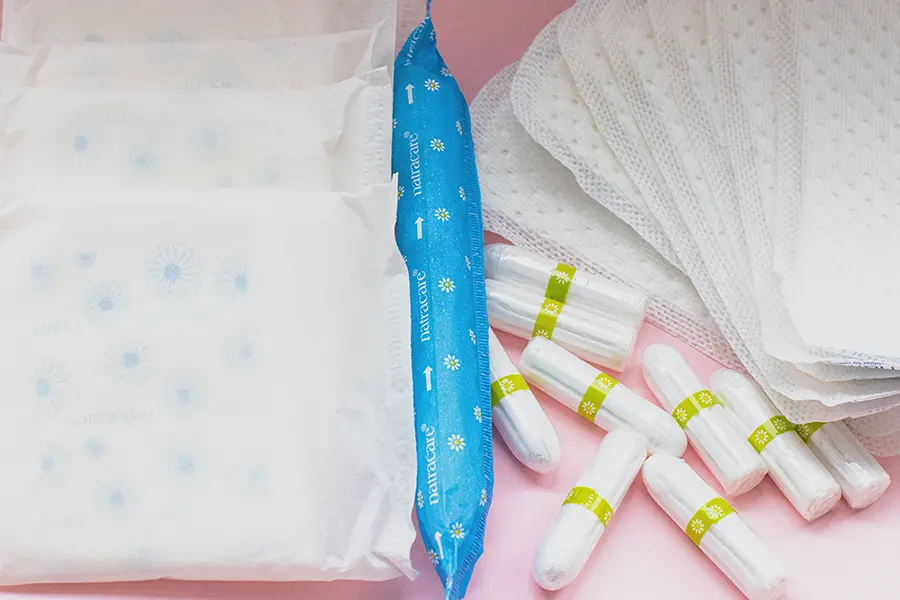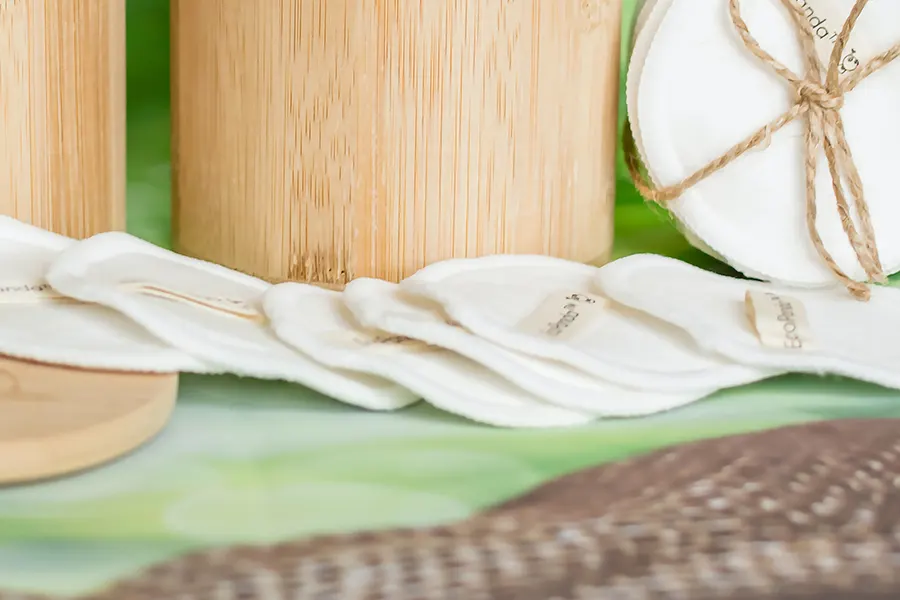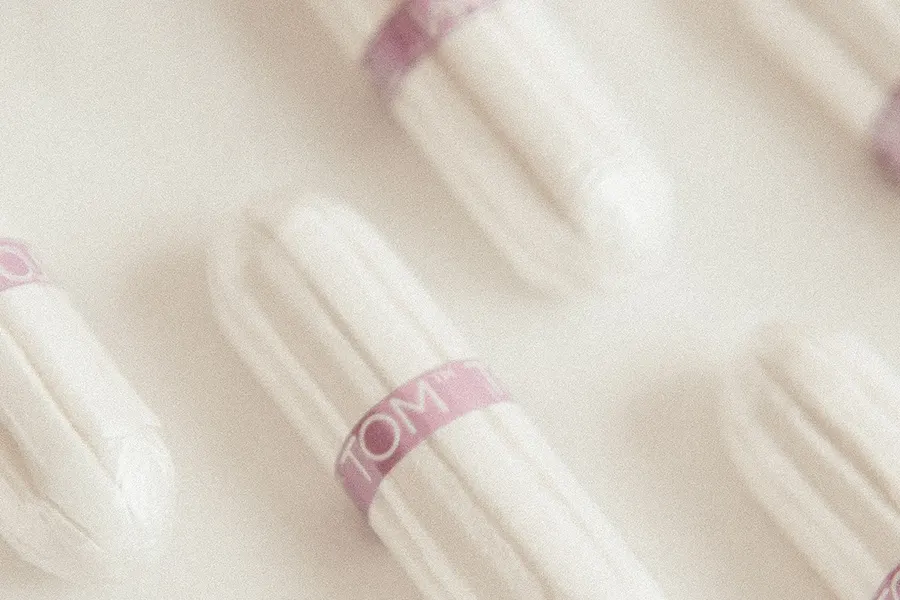A woman’s menstrual cycle is a natural process that should be treated with the utmost respect. However, with the abundance of choices for feminine hygiene products available in the market, it can be difficult to decide which product is best for you.
With the help of technology, many advancements have been made in the field of feminine hygiene. The three most popular types of feminine hygiene products are sanitary napkins, tampons, and menstrual cups. Sanitary napkins that are also known as menstrual pads are one of the popular options opted for by women and girls. The popularity of disposable sanitary napkins is evident from its global market share which is 24.4 Billion US$ as per the report by IMARC group.
The second most popular feminine hygiene product is tampons. They are made of cotton that is rolled and compressed into a small, tube-like shape. They are inserted into the vulva to absorb menstrual blood. Tampons have a market share of 4.7 Billion US$ globally as per the report by IMARC group.
The least commonly used feminine hygiene product is the menstrual cup. A menstrual cup is made of medical-grade silicone and is inserted into the vagina like a tampon. However, instead of absorbing menstrual blood, it collects it.

So, which one should you use – sanitary napkins vs menstrual cups vs tampons? The answer to this question depends on a number of factors such as your age, activity level, and personal preferences. In this blog post, I will tell you the pros and cons of each of these three popular types of feminine hygiene products so that you can make an informed decision about which product is best for you.
Let’s roll on without wasting any further time and explore the individual types of feminine hygiene products in detail.
Sanitary Napkins
Sanitary napkins are the most popular type of feminine hygiene product. They are made of cotton, rayon, or a combination of both materials. Disposable sanitary napkins are available in a variety of sizes, absorbencies, and shapes.
The average woman produces about 30 to 60 ml of menstrual blood per cycle. Depending on the amount of menstrual blood you produce, you will need to choose a sanitary napkin with the appropriate absorbency level. For example, if you have a heavy vaginal flow, you will need to use a sanitary napkin with a high absorbency level.
Sanitary pads are available in different shapes such as regular, winged, and overnight. Regular pads are the most common type. They are rectangular in shape and have adhesive strips on the back that help to keep them in place. Winged pads are similar to regular pads, but they have wings that help to keep them in place. Overnight sanitary pads are larger in size and have a higher absorbency level than regular or winged sanitary pads.

Pros and cons of sanitary napkins
The pros and cons of sanitary napkins will help you to decide whether or not they are the right type of feminine hygiene product for you. Some of the pros of sanitary napkins include:
- Easy to use– One of the best things about sanitary napkins is that they are very easy to use and dispose of. All you have to do is peel off the adhesive strip and place the sanitary napkin in your underwear.
- Readily available-They are widely available and can be bought at most supermarkets, drugstores, or at convenience stores.
- Variety of choices– Every woman is different from other in terms of size, ,flow and preference. Sanitary pads come in variety of sizes, shapes, absorbency rates and thickness. You can easily find a sanitary napkin that meets your specific needs as there is a wide variety of choices available in the market.
- Inexpensive – The cherry on top is that they are very inexpensive and affordable. You can buy your desired pad at an affordable price.

On the flip side, there are also some cons to sanitary napkins. The following are some of the cons that you must be aware:
Uncomfortable for someone– Though they are easy to use, some women may find them uncomfortable. The adhesive strips on the back of the sanitary napkins can sometimes irritate the skin. In addition, some women may find that the pads are bulky and noticeable when wearing tight clothing.
Risk of infection– If not changed frequently enough, there is a risk of developing a urinary tract infection or other types of infections.
Skin irritation– Some women may experience skin irritation or rashes due to the materials used in sanitary napkins.
Leaking problems– Sanitary napkins may leak if they are not changed frequently enough or if they are not the right size for your flow.
Bacteria growth– If not changed frequently, the blood and moisture in used sanitary napkins can provide a perfect environment for bacteria to grow.
Environmental impact– Disposable pads are one of the menstrual products that are harming the environment. They end up in landfills and oceans or burnt and deteriorate the natural habitats with their plastic pollution.
So, these are some of the pros and cons of sanitary napkins that you should keep in mind before using them. Let’s move on to the second type of feminine hygiene product, tampons.

Tampons
Tampons are another popular type of feminine hygiene product. They are made of cotton or rayon and are available in a variety of sizes and absorbency. They are inserted into the vulva like menstrual cups. According to one study, women up-to 41 years of age use tampons.
The average woman produces about 30 to 60 ml of menstrual blood per cycle. Depending on the amount of menstrual blood you produce, you will need to choose a tampon with the appropriate absorbency level. For example, if you have a heavy menstrual flow, you will need to use a tampon with a high absorbency level.
What is the working mechanism of a tampon?
The working mechanism of tampons is simple- they absorb the menstrual blood. These are made of cotton or a combination of rayon and cotton. They come in different sizes, and absorbency. They are placed into the vagina using an applicator or your fingers. The absorbent material in the tampon soaks up the menstrual blood.

What sizes are available with tampons?
They are available in different sizes. These sizes are basically measured by the amount of fluid they can absorb. The size depends on your age, flow, and vaginal muscle tone. Here is a guide to help you choose the right size for your needs:
Junior or light – These are smaller in size and are designed for women with lighter flows. They have lower absorbency levels and are ideal for women who are just starting to menstrual products.
Regular– These are the most popular size and are designed for women with average flows. They have moderate absorbency levels.
Super – These are larger in size and are designed for women with heavy flows. They have high absorbency levels and can hold up a high amount of fluid than the regular tampons.
Super plus- These are the largest size of tampons and are designed for women with very heavy flows. They have the highest absorbency levels.
Now that we have discussed the basics of tampons, let’s take a look at the pros and cons of tampons.
Pros of tampons
The tampons have their own benefits that cannot be found in sanitary napkins. The following are some of the pros of tampons:
More freedom
Women and girls need freedom during the menstruation period, and this is where tampons come in. They give you more freedom than pads. You can wear whatever you want without worrying about leaks, visibility, or discomfort.
Invisible
One problem with sanitary pads is that they are visible, and this can be a source of embarrassment for some women and girls. Tampons are not visible as they are inside the vulva and this gives you more confidence.
Can be used during sports and other activities
Tampons can be a great option for women and girls who are involved in sports or other activities. They allow you to participate in physical activities without any worries.
Discreet
Tampons are very discreet and can be easily hidden. You can carry them around without anyone knowing that you have them.
Comfortable
Tampons are generally more comfortable than pads, and you can forget that you’re wearing them.
Cons of tampons
Tampons also have some disadvantages that you should be aware of before using them. The following are some of the cons of tampons:
Risk of TSS
One of the biggest disadvantages of tampons is the risk of TSS or Toxic Shock Syndrome. TSS is a rare but serious condition that can occur when bacteria enter the bloodstream through a cut or sore. This can happen if you leave a tampon in for too long or if you use a tampon with a high absorbency level.
Dryness and Irritation
Tampons can cause dryness and irritation in some women. This is because they absorb not only the menstrual blood but also the natural moisture of the vagina.
Discomfort
Some women find tampons very uncomfortable, especially if they are not used to wearing them. It can take some time to get used to wearing them.
Now that you know the pros and cons of tampons, you can decide if they are the right option for you. If you have any concerns, it is always best to consult with your doctor.
Now let’s take a look at menstrual cups.

Menstrual cups
Menstrual cups are a newer option for feminine hygiene, and they are becoming more popular. These menstrual cups are made of soft silicone and are inserted into the vulva like a tampon. However, instead of absorbing the menstrual blood, they collect it.
There are many different types and brands of menstrual cups available on the market. The size of the bell-shaped cup is usually based on your age and whether you have given birth vaginally or not. It is important to choose the right size of the menstrual cup for you to ensure that it is comfortable and does not leak.
Pros of menstrual cups
Menstrual cups are underrated but have many benefits. The following are some of the pros of menstrual cups:
No risk of Toxic Shock Syndrome
One of the biggest advantages of menstrual cups is that there is no risk of TSS. This is because they are not absorbent, so there is no way for bacteria to enter the bloodstream.
Less dryness and irritation as compared with pads and tampons
The problem with pads and tampons is the dryness and irritation that they can cause. This is because they absorb the natural moisture of the vagina along with the menstrual blood. This can lead to dryness, itching, and irritation. On the other hand, menstrual cups work on the mechanism of collection of moisture rather than absorption, so there are nominal chances of irritation.
Can be worn for longer
Menstrual cups can be worn for up to 12 hours, which is much longer than a tampon. This feature makes them attractive for working women, who have to stay long hours at the office or workplace.
Cheaper in the long run
Menstrual cups are a more economical option in the long run as they can be reused.
Environmentally friendly
One of the good things about menstrual cups is that they are environmentally friendly as they can be reused. Moreover, they will cause less waste and pollution as compared with tampons and sanitary napkins. Therefore, using menstrual cups is becoming more popular among environmentalists.
Now let’s take a look at the other side of the coin i.e. the cons of menstrual cups.
Cons of menstrual cups
There are also some disadvantages of menstrual cups that you should be aware of before using them. The following are some of the cons of menstrual cups:
Difficult to insert
One of the biggest disadvantages of menstrual cups is that they can be difficult to insert. This is because they are soft and need to be folded in order to be inserted into the v. Some women find it difficult to do this, and it can take some time to get used to.
Can be messy
Another downside of menstrual cups is that they can be messy. This is because when you remove them, the blood can spill out. You need to be careful when removing them so that you don’t make a mess.
Can be uncomfortable
Some women find menstrual cups uncomfortable. This is because they are inserted into the front bottom and can cause some discomfort.
These are the pros and cons of menstrual cups.
Now you know the pros and cons of each menstrual product, you can decide which is best for you. If you have any concerns, it is always best to consult with your doctor.

Conclusion
So, these were the three most popular feminine hygiene products – sanitary napkins, tampons, and menstrual cups. Each of these has its own pros and cons. The question of which one is best for you depends on your own personal preferences. If you want something that is easy to use and dispose of, then disposable pads i.e. sanitary napkins are the best option for you. If you are looking for something discrete and small, then tampons are the best choice. And if you want something that is more economical and eco-friendly, then menstrual cups are the best option. Whichever product you choose, make sure that you use it according to the instructions to avoid any problems. Moreover, in case of any doubt or issue, it is always best to consult with your doctor.
